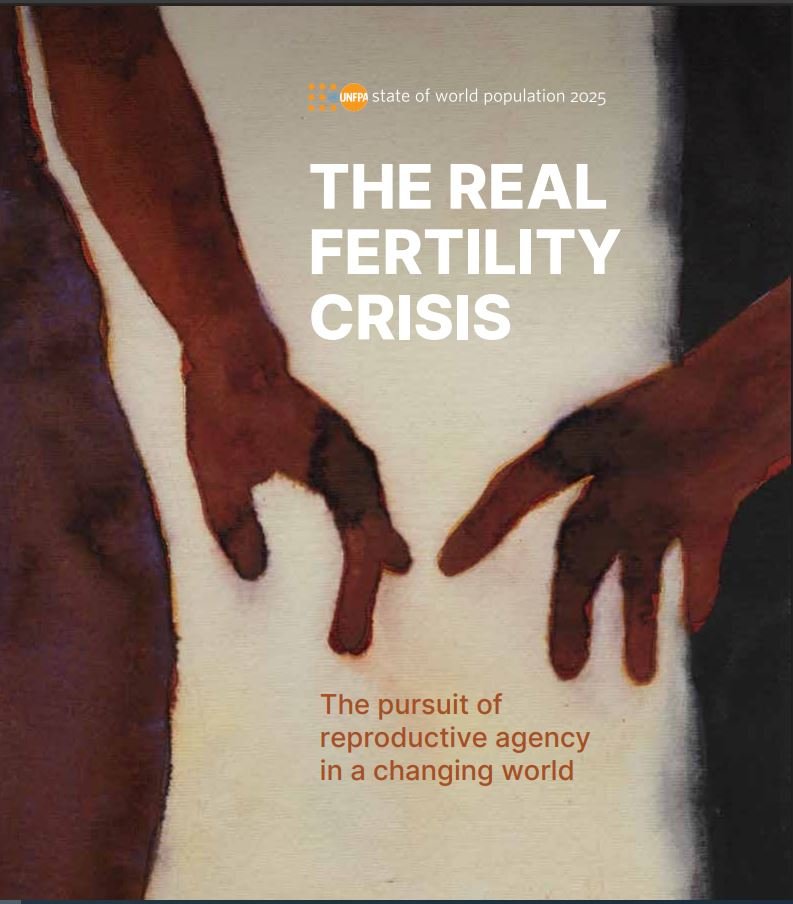The United Nations Population Fund (UNFPA) has sounded a powerful alarm through its 2025 State of World Population (SOWP) Report, titled “The Real Fertility Crisis.” The report reveals that 36% of adult Indians have experienced unintended pregnancies, while 30% have unfulfilled desires regarding the number of children they want. Alarmingly, 23% faced both situations, highlighting deep systemic issues in India’s reproductive healthcare ecosystem.

Rather than panic over falling fertility rates, the UNFPA urges policymakers to shift focus to reproductive agency—the ability of individuals to make free, informed decisions about sex, contraception, and parenthood—fertility crisis.
“It’s not about numbers—it’s about choice. Fertility must be a matter of rights, not regulation,” emphasized Wojnar.
India’s population is expected to peak at 1.7 billion in the early 2060s before gradually declining. However, many Indians still lack access to resources that enable them to plan families according to their wishes.
Key Barriers: Money, Marriage, and Misinformation
According to a UNFPA-YouGov survey conducted across 14 countries, Indian respondents pointed to numerous roadblocks:
- Financial strain (38%)
- Job insecurity (21%)
- Housing issues (22%)
- Lack of childcare (18%)
- Health challenges like infertility and poor maternal care
- Family or partner pressure (19%)
- Anxiety about climate change, conflict, or instability
These factors collectively limit reproductive freedom, especially for women and marginalized communities.
High Fertility vs. Low Fertility: The Indian Duality
India’s fertility rate has fallen to replacement level (2.0 births per woman), but sharp regional and social disparities remain:
- High fertility persists in states like Bihar (3.0), Meghalaya (2.9), and Uttar Pradesh (2.7)
- Fertility is below replacement level in 31 States/UTs
- Adolescent fertility remains high at 14.1 per 1,000 women aged 15–19, affecting maternal and child health
The Total Wanted Fertility Rate (TWFR) in high-fertility states like Bihar (2.2) shows a clear gap between actual and desired family sizes, while low-fertility states like Sikkim (TFR 1.0; TWFR 0.9) show closer alignment.
What Needs to Change? A Rights-Based Approach
UNFPA recommends a rights-based, inclusive model to ensure demographic resilience:
- Universal access to contraceptives, safe abortion, infertility and maternal care
- Investments in childcare, housing, education, and workplace flexibility
- Policies that support unmarried, LGBTQIA+ individuals, and underserved communities
- Community outreach to challenge stigma and promote health literacy
“India has come far—from five births per woman in 1970 to two today—but freedom must be equal for all,” Wojnar stated.
Empowering Choice, Enabling Change
The UNFPA’s 2025 report is not a warning about falling birth rates, but a clarion call to protect reproductive rights. The real demographic dividend will come not from managing population size, but from ensuring every person can decide when, whether, and how many children to have—freely and without fear.








